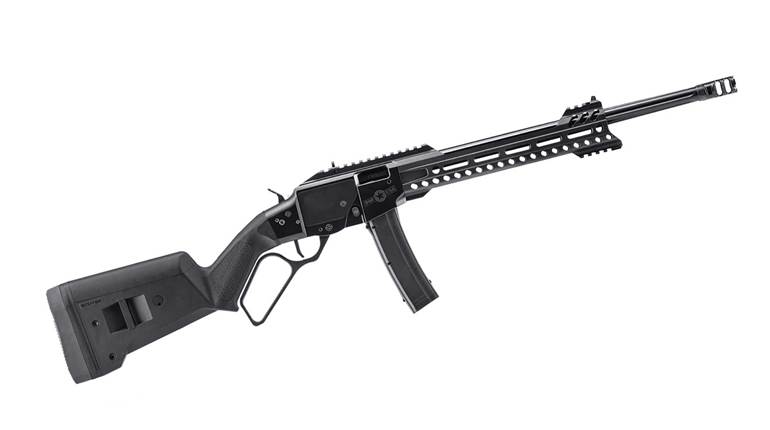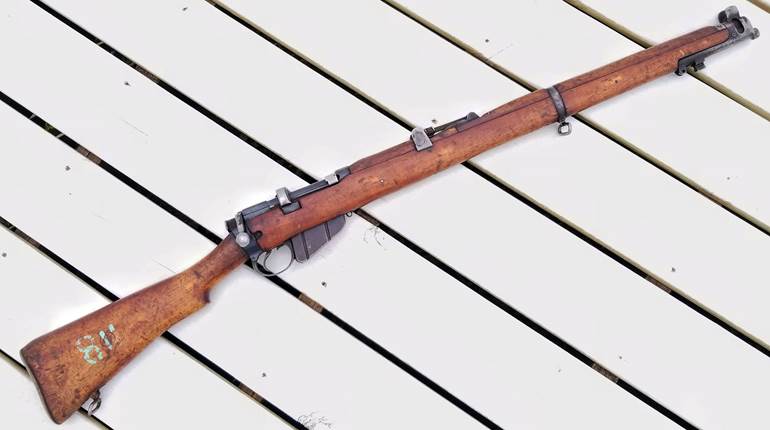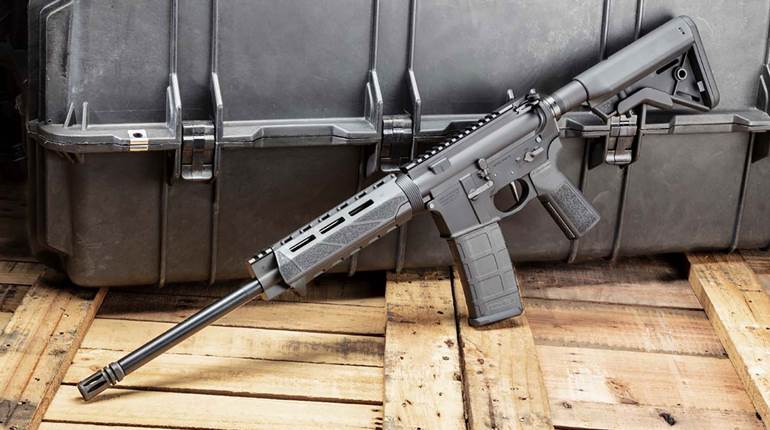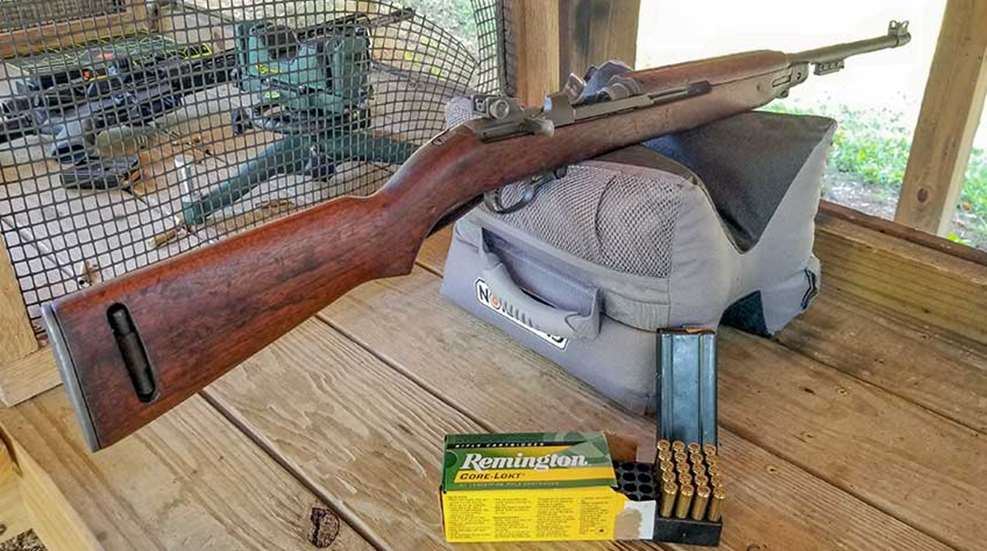
In recent years, the question floating around forums and articles about military surplus was, “Is the era over?” It’s true that the firearm world is in the twilight stages of military-surplus importing. There are no bargain barrels of M1903 Springfields or 98k Mausers anymore. The back pages of popular gun magazines aren’t littered with two-for-one deals on SKS rifles or Lee-Enfields. The question that remains, though, is this: How much light is left? Thanks to a recent find in Ethiopia by Royal Tiger Imports, it’s clear that we can still see at least a sliver of the sun.
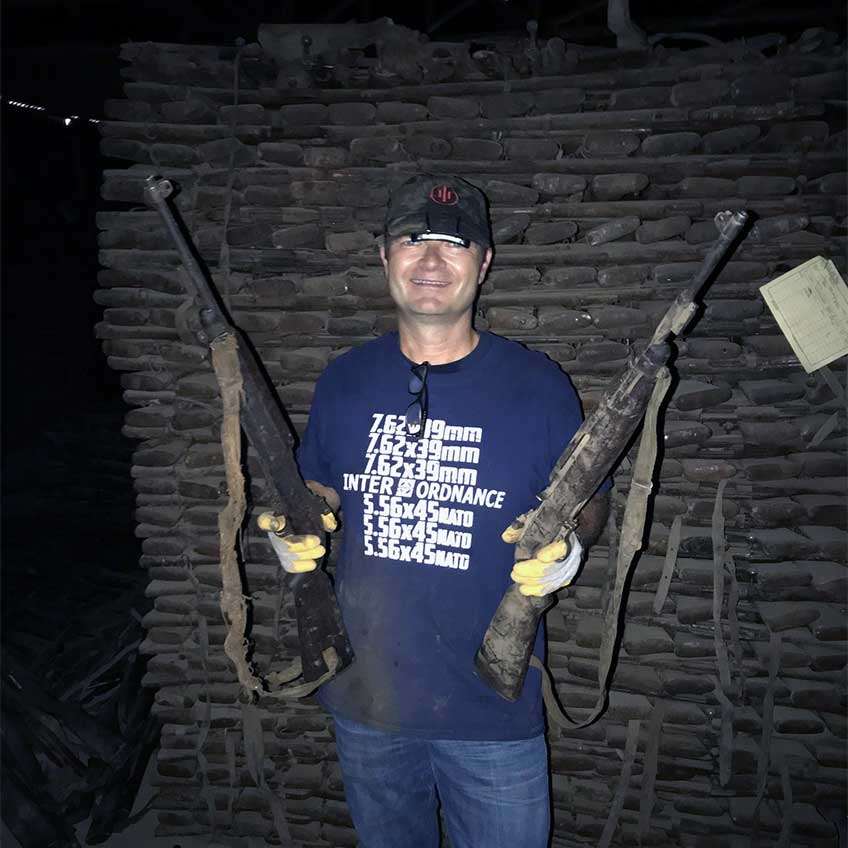
The find is the result of years of work on the part of Uli Weigand, who spoke with American Rifleman Editor-in-Chief Mark Keefe about the magnificent discovery in this article. As a short recap, though, Weigand managed to get his hands on storehouses that held many of the military arms purchased by or given to the Ethiopian government from the late 19th century through the long reign of Emperor Haile Selassie and past the Communist takeover of the 1970s. The find encompassed tens of thousands of firearms, running the gamut from Italian rifles captured from invading forces, Belgian rifles with the imperial seal to post-WWII exports given to the Ethiopians as aid during the early decades of the Cold War.
American Rifleman publicized this discovery in our magazine, highlighting several of the guns plucked from the stash. Among the group were several FN Mausers, a Lee-Enfield No. 4 Mk I* and an Underwood M1 Carbine, which are all representative of many of the guns uncovered in those rural Ethiopian warehouses. The M1 Carbine stood out as a particularly nice example, and M1 Carbines are one of the most difficult military-surplus guns to bring back from overseas caches, thanks to a litany of legal and political hurdles.
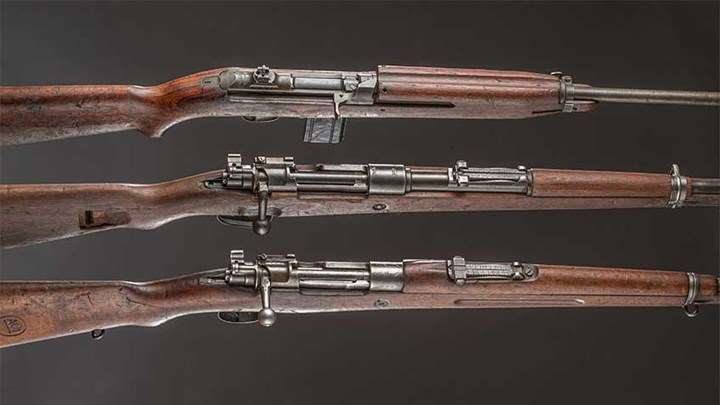
Pictures from the Royal Tiger Imports find will highlight the range of elements that factor into the condition of these guns, and they’re priced accordingly. Immediately following World War II, the United States and the Soviet Union engaged in an arms race, but not the kind of arms race we think of today. Instead of building up their own stockpiles, both countries used the immense surplus of arms produced domestically and collected from battlefields across the world as bargaining chips and aid items designed to bring nations within their sphere of influence.
Having produced more than six million M1 Carbines over the course of the Second World War, the United States had rifles to spare. While some of these guns were released onto the domestic surplus market, many more were sent overseas to arm potential allies.
Ethiopia is one such nation that received a batch. The M1 Carbines found in the RTI stash encompass all levels of condition and originality and are found from many different makers. There are guns with the early-war sighting system, while many more have been discovered with late- or post-war features, such as adjustable sights and bayonet studs.
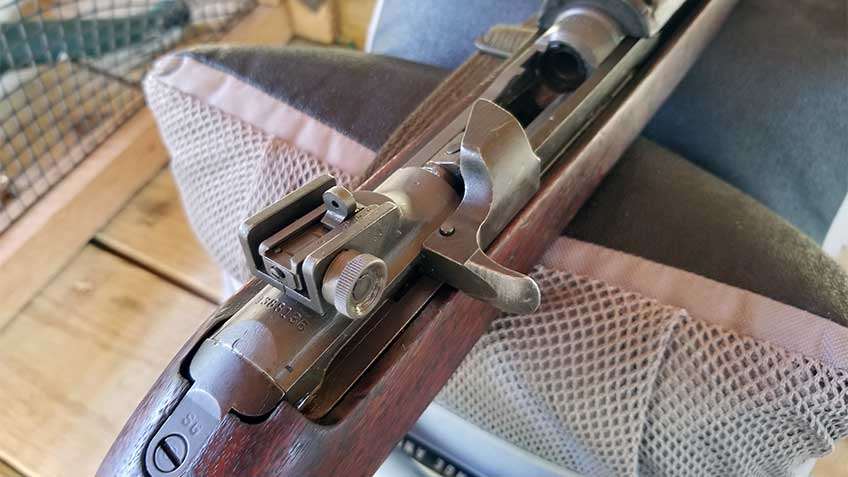
The M1 Carbine received by American Rifleman is one of the more typical examples found in the stash, which is why it was chosen as a representative example for our readership. I elected to take a closer look at this example to see exactly what a “typical” sample M1 Carbine from the Ethiopian stash looks like.
The manufacturer of this particular M1 Carbine was Underwood Typewriters, which produced 545,616 carbines from 1942 to 1944. This sample has a serial number of 1,388,136 and an Underwood-produced barrel with an ordnance date of August 1943 stamped below the “flaming bomb.”

At first glance, this particular carbine shows typical signs of long-term storage. The stock is covered with dents, dings and slight gouges, most of which could be pulled out with some light steaming, if desired. Personally, I think it adds to the character of guns that have certainly “been there, done that.”
The stock features a very light “SA SHM” and ordnance wheel stamped on its left side, evidence that it underwent some kind of post-war refurbishment that involved some wood refinishing. The main buttstock and fore-end, as evidenced by the stamp, are of Springfield Armory manufacture and feature the early straight stock profile. However, this is not a high-wood example made during the early period of M1 Carbine production, though any high wood could have possibly been trimmed down at a later date.
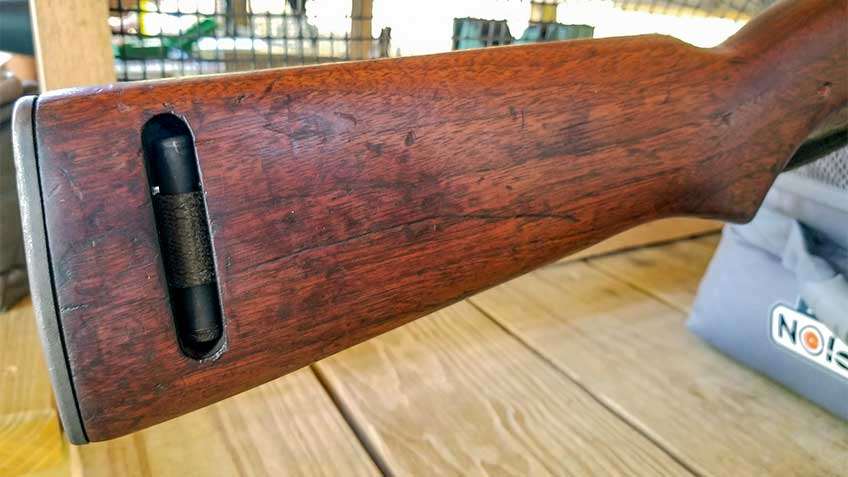
The handguard is of a later pattern, featuring four rivets instead of the two-rivet design made during most of the war. The four-rivet design emerged early in 1945, and many wartime-production M1 Carbines were subsequently outfitted with this reinforced top wood.
I’ve hinted at the fact that this particular Underwood M1 Carbine underwent a post-war rebuild and refurbishment at some point, and there are several more clues pointing toward that fact. First, the rear sight is of the adjustable, ramped variety instead of the two-position peep sight used on most carbines during the war. The Royal Tiger Imports stash has a collection of early-style M1 Carbines outfitted with these two-position sights, which is more correct for a WWII-era M1 Carbine.
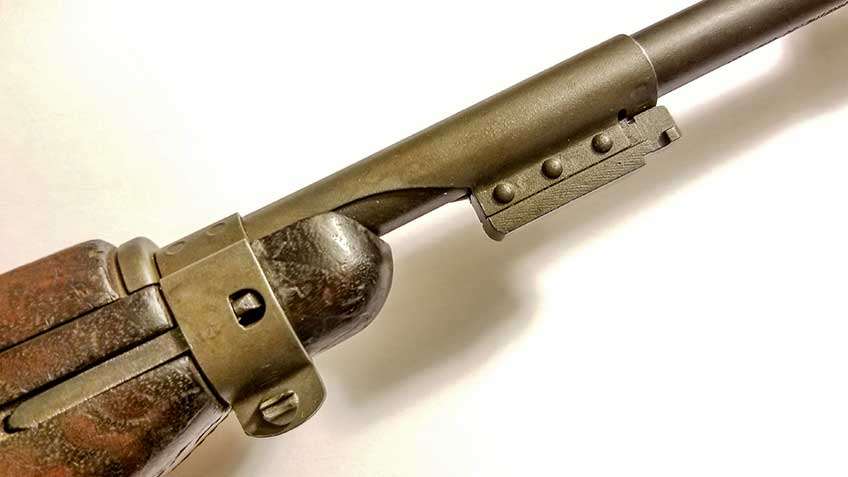
Also found on this Underwood-produced example is the Type 3 barrel band, which is the only M1 Carbine band to feature the catch for a bayonet latch. During World War II, many carbines had no provision for attaching a bayonet, and it wasn’t until late in the war that the Type 3 band emerged as a solution. Subsequently, many early-production guns had their barrel bands replaced with this updated component during a post-war refit.
This Underwood M1 Carbine also features the later rotary-style safety in lieu of the push-button safety first encountered on the design. As the M1 entered combat, it was found that soldiers and Marines too often mistook the magazine release for the push-button safety. Despite this alarming fact, the military took its time finding a solution, and the Type 4 rotary safety was only approved for production in March 1945. Several years after the war, M1 Carbines in U.S. military inventory were retrofitted to use the rotary safety in lieu of the push-button safety.
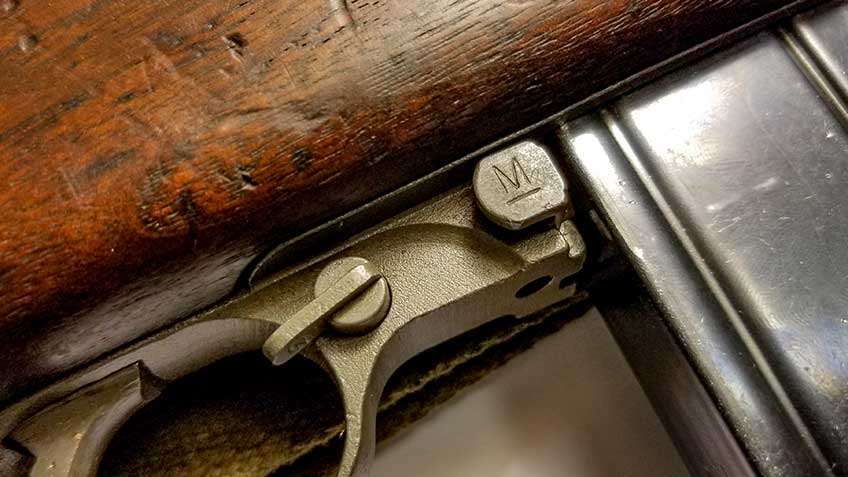
Another piece of evidence pointing to an eventual retrofit of this 1943-production M1 Carbine is the “M” marked magazine release. In collector circles, this is referred to as the Type 3 magazine release, and the “M” mark signifies the “Modified” nature of the release, as the military elected to move to a release with a thinner internal rail that reduced the chance that the catch would bind during operation. Examples of this catch used in normal production appear as early as January 1944, but the military ordered a retrofit of all issued carbines in May 1945.
One early component on this Underwood M1 Carbine is the flat bolt. Later-production bolts moved to a rounded profile, as that eliminated a machining cut and sped up production. One of the other neat elements included on this particular M1 is the sling. Many of the carbines found in the Ethiopian stash included the issue slings sent over with the guns.
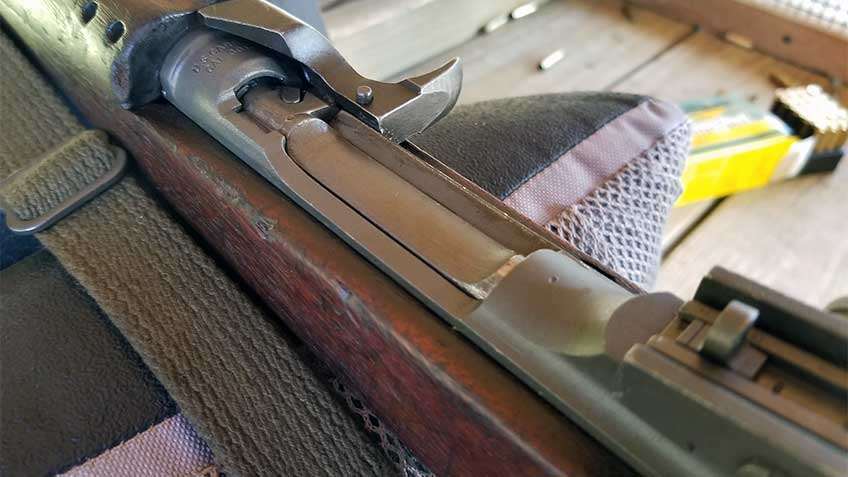
Indeed, most models of firearms found in the RTI stash can be found with crudely made or repaired slings as the originals became damaged or worn with use. The sling on this carbine remains in excellent condition and is indicative of a WWII-era sling, as evidenced by the U-shaped tab and the olive-drab weave.
So, overall, this Underwood M1 Carbine is a wartime production gun that underwent an armory refit sometime after World War II, in all likelihood. After that refit, it was shipped to Ethiopia as military aid. What happened to it then? Records in that regard are few and far between. Judging by the condition of the bore, though, I’d elect to say that the Ethiopians likely received this gun and then stuck it in storage for the next 70 years.
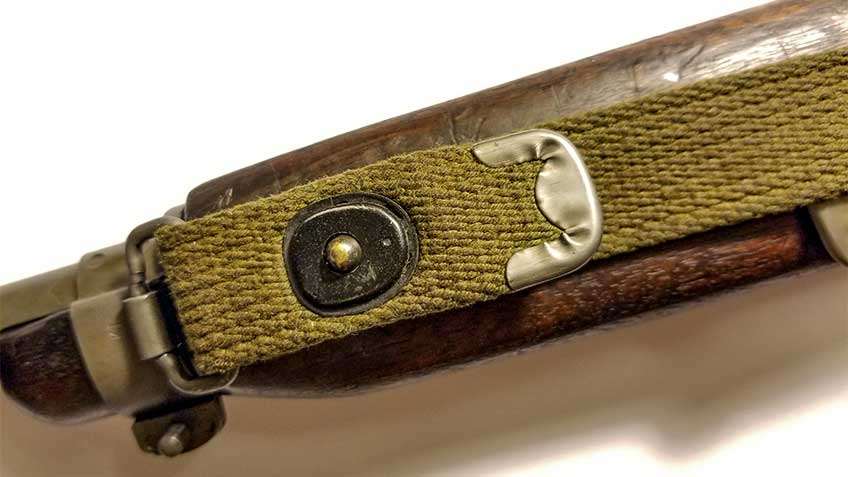
The bore on this Underwood M1 Carbine is, by far, the best part of the gun. It is absolutely pristine and features razor-sharp lands and grooves and a bright, mirror-like finish. In fact, it’s hard to tell whether the gun had been fired much at all.
Otherwise, condition is as it arrived stateside from its long nap in East Africa. There’s a distinct smell to surplus rifles, largely derived from the materials used in long-term preservation and storage, combined with years of accumulated grime. I’m happy to report that this M1 Carbine did not disappoint in that regard.
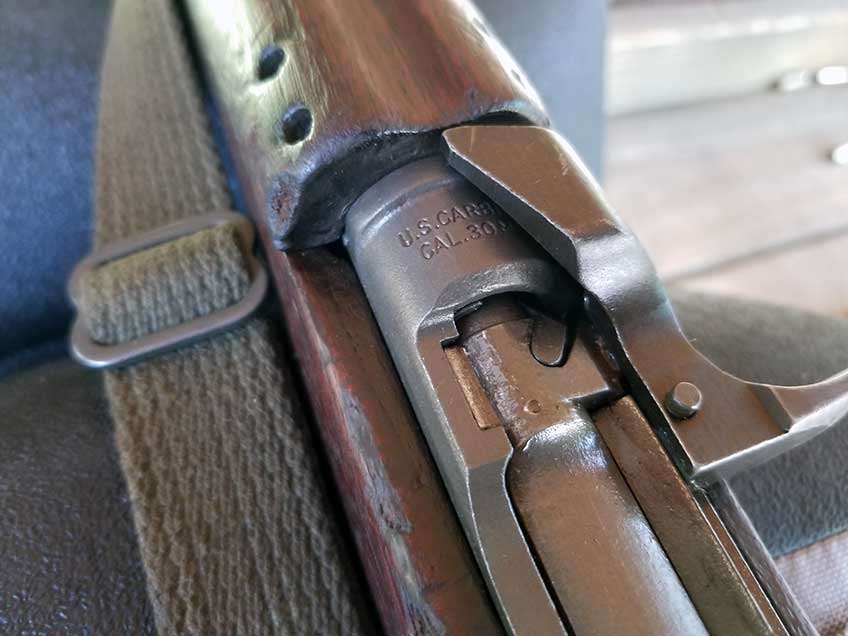
Of course, no military-surplus experience is complete without taking these old warhorses to the range. It was a hot, humid day in West Virginia when we fired this Underwood M1 Carbine for the first time in probably 75 years. Given its pedigree as a military arm and after a brief check for basic safety functions, I decided to just toss it in a case and see if it would shoot.
Despite its smell, it appeared that RTI had done some basic inspection, clean-up and lubricating of the carbine, probably when it arrived stateside, so we weren’t going into it completely blind. We loaded up some Remington .30 Carbine ammunition into its 15-round magazine and encountered our only real issue with the carbine.
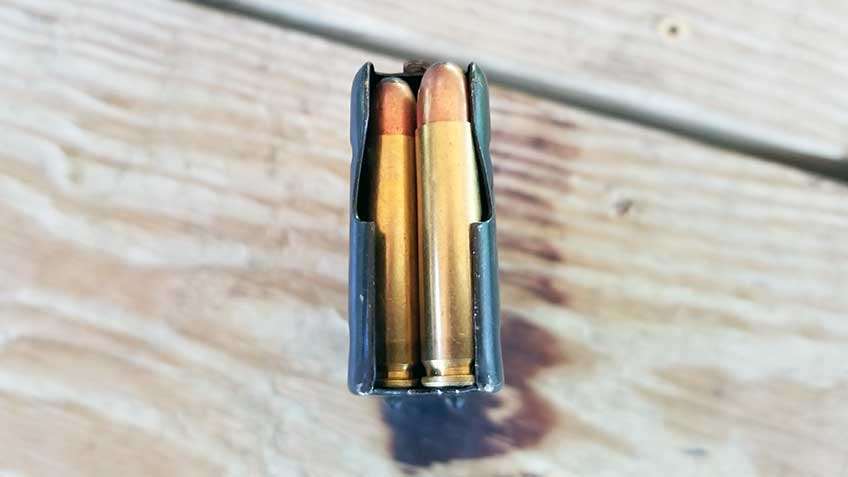
With a freshly inserted magazine, the gun struggled to chamber the first round. After some inspection, we found that the trigger group moved quite a bit inside the stock, with enough vertical movement allowed that it actually moved a seated magazine below the bottom face of the bolt.
This caused some doubts as to whether or not the gun would actually function reliably. Upon later inspection, American Rifleman staff found that the trigger-housing pin was actually missing from the gun, which allowed the housing to move. Fortunately, this is an easy fix.
Shockingly, after a little help getting the first round to chamber, the Underwood M1 fed almost flawlessly, even with a missing trigger-housing pin. Score one for the durability of American military arms. Across nearly 100 rounds fired, the only malfunction we experienced occurred near the end of our range trip was a single stovepipe. We quickly cleared the jam and continued firing.
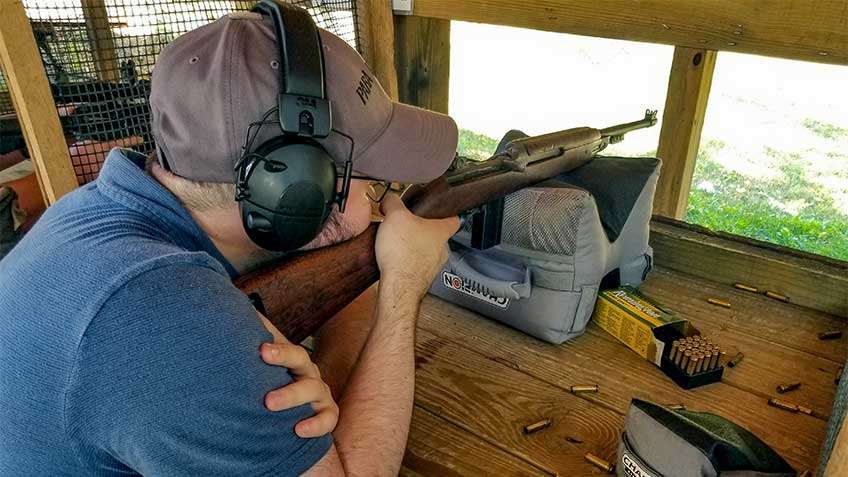
Accuracy-wise, we weren’t expecting any stunning results, but the carbine held its own. In fact, nobody on the firing line was even sure we’d be able to hit the square zeroing target at 100 yds., as we had no confirmation that the gun was even zeroed properly.
Before loading up, I set the post-war adjustable sights to the 100-yd. mark, chambered a round and fired. The first few rounds landed a few inches to the right of the bullseye. Elevation was perfect. We clicked the adjustment wheel over a few notches, and then we were in business. The Underwood was back in action.
Firing off a front sandbag rest, we shot through the open irons at a casual, fairly rapid pace. The trigger was heavy, but the break was crisp. The front sight blade covered most of the target sheet at 100 yds., making pinpoint accuracy difficult, but both shooters printed three-to-five-shot groups around 3-4”.
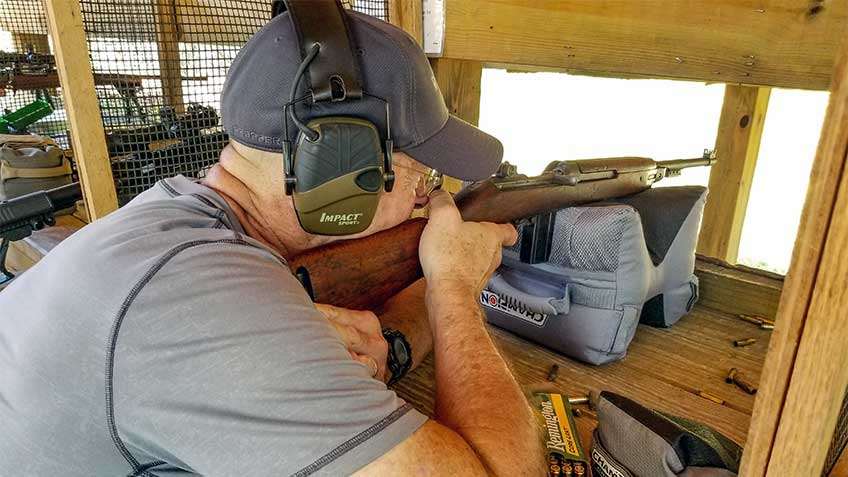
After my day on the range with Royal Tiger’s M1 Carbine, I find myself appreciating men like Uli Weigand all the more. Thanks to their intrepid efforts, I think it’s safe to say that military-arms enthusiasts will have guns that feed their passion for at least a few more years to come.
And what about this Underwood M1? Well, there’s a Smith-Corona M1903A3 in my gun safe, and I think a little pairing of “typewriter guns” wouldn’t go amiss. I think I'll be buying this one, and you should get yours while you can.













